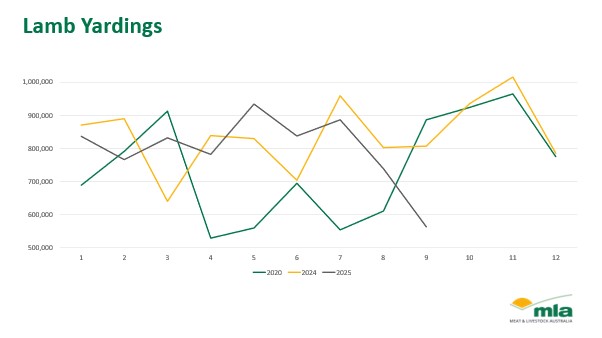What’s driving the sheep and lamb yardings shift?
Key points
- Sheep yardings in 2025 have seen a strong early year supply compared to previous years.
- Spring lamb yardings are lower than previous years, indicating tighter supply during the high-demand period.
- Sheep and lamb overall 2025 throughput is higher than a previous peak in 2020 with yardings concentrated mid-year.
Sheep and lamb yardings in 2025 show clear shifts in both timing and volume compared to previous years. Sheep yardings in 2025 were strong in the first half of the year, suggesting producers were offloading stock earlier in the season. Lamb yardings, however, have been softer than in 2024, particularly into spring. This points to tighter supply during the traditionally high-demand period.
When comparing numbers in 2025 to 2020, total sheep yardings in 2025 are slightly higher, tracking at 3.7 million head versus 3.5 million in 2020. Supply in the first half of 2025 was 60% higher over the same period in 2020, with a similar trend seen in lamb yardings. Early year supply for sheep and lambs is elevated compared to levels five years ago.

Total 2025 yardings are lower than 2024 figures. Sheep yardings in 2024 reached 4.9 million head, while lambs totalled 10.1 million. In 2025, spring and late year yardings have softened for both.
When comparing to 2024 numbers, combined sheep and lamb yardings have eased 5% and September figures are expected to be lower than September 2024. This indicates that while overall annual volumes remain strong for sheep, both sheep and lamb supply was concentrated in the first half of the year.

Looking at seasonal patterns, sheep yardings in 2025 have been front-loaded. January (450,359 head) and February (479,444 head) were strong and were followed by a significant autumn lift.
Lamb yardings mirror this strong early year month trend, including:
- January at 836,284 head
- February at 766,101 head
- May at 933,893 head.
August and September saw reduced numbers, pointing to tighter supply heading into spring.
The timing shift has important implications. For processors, saleyards, and buyers, heavier autumn yardings and lighter spring flows will affect pricing, scheduling, and throughput management. Seasonal conditions and market signals have resulted in producers front-loading sheep and lambs, offloading more stock earlier in the year.
Overall, the 2025 season differs to previous years. Compared with 2020, early year supply is elevated for both sheep and lambs and compared with 2024, total yardings are lower and spring supply has eased.
Market participants should expect continued throughput with reduced availability later in the year. This may influence processor demand and pricing dynamics.
Attribute content to Emily Tan, MLA Market Information Analyst
Information is correct at time of publication on 25 September 2025



